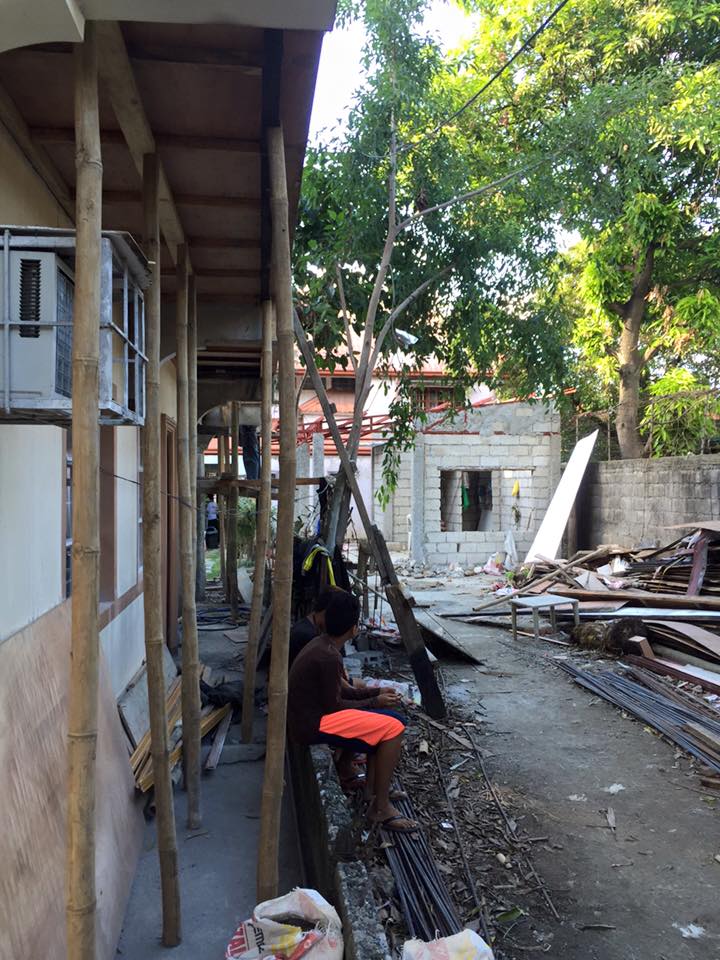
Uploaded on 2016-06-21 by Jason B. Santos
Module 4: Task 1 – A Globalized Economy Building: Tanay, Rizal, Philippines The task will be centered on the premise that “almost every single building contains components of a Globalized economy”. This means that because of widespread information, the global market is continuously improving, especially in the developing countries. They are opening up their economy to a global scale due to market-driven forces and currently, the construction industry is ever growing. The photograph displays how the localized market is infused with the globalized economy. The above photo is a recent residential building construction, wherein I was the lead Architect for the project. The site is located in the Municipality of Tanay, Province of Rizal which is located in the Philippines. As shown, “bamboo” is the most prominent building material used for this type of construction as scaffolding and formwork support. This type of bamboo is common in the locality of Tanay, Rizal mostly in the higher elevation areas. The “foreman” or the commonly known as the head of construction is a local hence, the preference to use bamboo in aid of construction. It is important to note that the use of bamboo is only a tool used for construction and not as a material that was used for the building. The concrete hollow blocks on the far right came from a different town – Antipolo City, including the wood and timber products. The steel reinforcing bars below were as assumed imported from China as they are ranked number one in raw steel production by country. The cement used also came from Antipolo City, where one of the leading cement manufacturers in the Philippines is established. It is near the proximity the Town of Tanay, Rizal. The paint use is also locally manufactured in the country. To sum up the building stock of materials, the countries involved in the sources of materials are China and the Philippines. Then locally, the towns involved are Antipolo and Tanay. A good thing to consider here is the proximity of the distance. They are relatively close thus, lowering the logistics cost and subsequently the construction cost given that the project is a simple residential housing development. This supports the context that construction used to be a localized activity, but due to certain processes and forces, the buildings constructed contained components of a globalized economy. These forces include technology, demand and economy. Mainly, to speed up the processes involved to lessen the time and manpower required for construction hence, lowering the development cost. With this in mind, sustainability becomes second place and materials might be exploited in the expense of cost. It is really important to understand the materials involved its function in the construction and the environment where it was taken from and where it will be placed and also the process or manner of handling and manufacturing all synthesized to make the construction and building sustainable and resilient for the future cities. I feel that having a globalized economy with regard to building construction is both good and bad both have pros and cons that if developed or balanced properly can lessen the negative effects and be more sustainable. In relation to this thought, the term “Glocalization” would be the proper word for this balance. As defined by Wikipedia, “Glocalization is the adaptation of international products and services around the particularities of a local culture in which they are sold. The process therefore, allows integration of local markets into world market”. The key point here is the “integration” of local markets globally however, to a certain degree only, without exploiting and depleting the local source in exchange of the demands of the outside market. Integration is a more sustainable process with regard to construction, instead of having a “mixture” of components of a globalized economy in a building. The latter gives a feeling that the building is not organically developed and done in a haphazardly way or just an afterthought. The local and global market integration or synthesis, in effect will support the idea that “construction used to be a localized activity”. Instead of being heavy on importation to achieve local demands and exportation to mobilize the global market demands, the local construction products that are abundant should be used first so as not to take advantage of other countries local resources. Locally natural and abundant construction materials must be developed to achieve sustainability in its application to the building while infusing or augmenting globally abundant construction materials to be used in the future cities. This is also true to local construction methods and processes that are adaptable to the current location and existing scenario meaning what was implemented and worked for country “A” might not be adaptable and sustainable for country “B”. Furthermore, construction will play a major role in the development of future cities. This is where the plans and design become a reality for the city – “this is where the rubber meets the road”. Continuous research and development is required to filter information and translate it to noble use in building construction while achieving adaptability and sustainability.